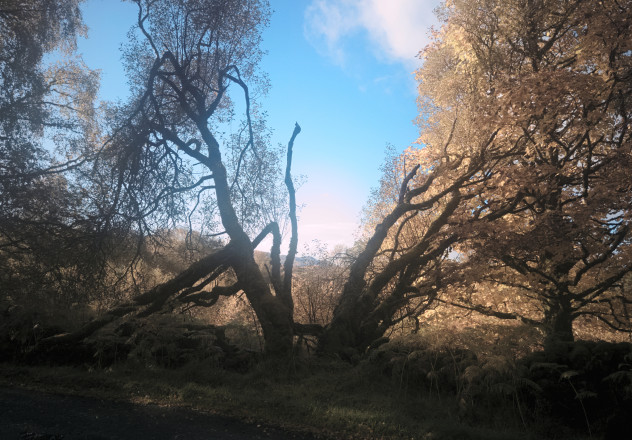Late November, very late autumn – short days of chilly weather and cold light – I set off for a drive through Glen Lyon. I’d not been there for at least five years; felt like ages. Yet very little changes. The river Lyon still burbles on merrily past the Roman Bridge (that isn’t in any way Roman – it dates from the late 18th century); the mountains were all the same shape, with a light dusting of snow hinting at winter yet to come; the Scots Pine trees were still where I remembered them being (and, more to the point, I’ve since learned that they’re a remnant of the Caledonian Forest). There are, however, yet more potholes in the road from the dam at the end of the Glen up and over to Glen Lochay and someone’s plonked a cattle fence across the way. So it goes.
I had some fun with the Pentax 50mm f/1.8 lens, using it for landscapes (not a usual choice for me) and closeup work, even using a hole drilled in the lens-cap to make it into a pinhole.
Ansel had his “Moonrise, Hernandez, Mexico” moment. On the way back along the glen, I had my “Moonrise, Glen Lyon, Scotland” moment: the dullest of grey fading light, a clear view along between the mountains, dark bluey clouds passing rapidly in the distance and the moon rising beyond. Better yet, there were two boulders – one to climb, from which the other made a nice foreground feature. Click. Or more accurately, cliiiiiick, click, cliiiiiiiiiiiick – the sounds of a long exposure HDR sequence (1s, 0.25s, 4s) to capture the contrast on the scene. Categorically the best photo opportunity of the year.
I drove back over Ben Lawers in the pitch black with the rain turning to sleet.
